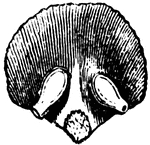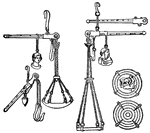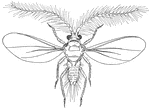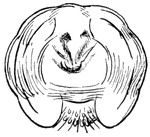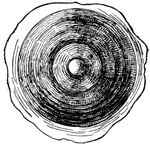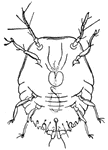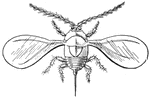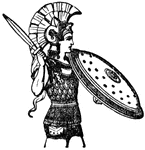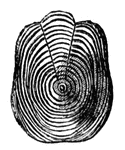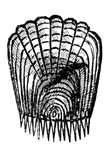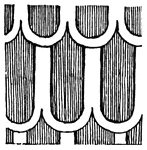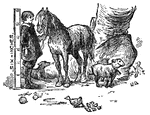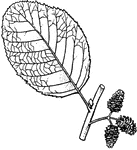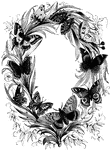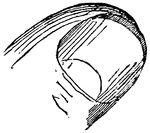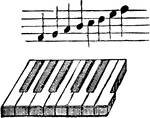Kin
"The principle of the sound of silk is exemplified in the Kin or Ch'in, made of twisted silk being stretched…

Trumpet
The soprano of the horn: it has the same harmonic scale, but moves in a region at once higher and more…

Xylophone
A percussion instrument consisting of a mounted row of wooden bars graduated in length to sound a chromatic…
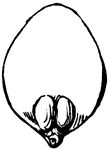
Pistil
The upper side of an open pistil or scale from a forming Larch-cone. The ovules becoming seeds.

A Young Lady's Dower in Pine Tree Shillings
A young colonial woman's dower being paid in shillings according to her weight.
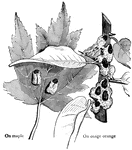
Scale
The scale bugs, or bark lice, are very injurious to trees: some of them are among the worst pests of…
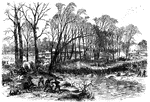
Battle of Stone River
"Battle of Stone River, Tenn. The decisive charge of General Negley's division across the river- the…
bacteria and cambric needle
The point of the finest cambric needle, with a particle of dust (above) and bacteria (below) for scale.

Hand Weeder
The hand weeder works on the same principle as the hand cultivator, but on a smaller scale. It is best…
Armed Bullhead
"Noted for being completely covered in horny scales. It is common on all the coasts of Europe and Greenland."…
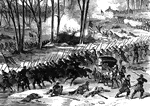
Battle of Stone River
"Battle of Stone River, Tenn. The decisive charge of General Negley's division across the river- the…

Battle of Stone River
"Battle of Stone River, Tenn. The decisive charge of General Negley's division across the river- the…
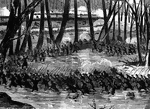
Battle of Stone River
"Battle of Stone River, Tenn. The decisive charge of General Negley's division across the river- the…

Xyris
Leaves smaller, rigid; small yellow flowers gathered in dense heads at top of naked stalk, each subtended…
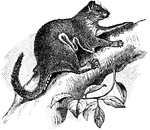
Scale-Tailed Squirrel
"A remarkable family of flying rodents of Africa; the scale-tailed squirrels."-Whitney, 1902
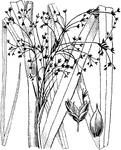
Cladium
Spikelets with the uppermost scale only enclosing an achene; our commonest species has saw-edged. cutting…

Julian
"Thus the prince, both when present and when coming, was alike victorius: and these things he achieved…
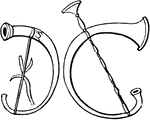
Cornu
"A wind instrument, anciently made of horn, but afterwards of brass. Like the tuba, it differed from…
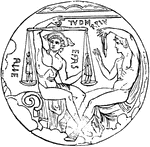
Libra
"A balance, a pair of scales. The principal parts of this instrument were: 1. The beam. 2. The two scales,…

Map measurer
"By use of an instrument called a map measurer, set the hand on the face to read zero, roll the small…

Fungi
"These may be placed at the very bottom of the vegetable scale, and are observable in a great variety…

Hydrometer of constant weight
"As generally made, a hydrometer of constant weight consists of a glass tube near the bottom of which…
Barometer
"A Torricellian tube, firmly fixed to an upright support and properly graduated, constitutes a mercurial…
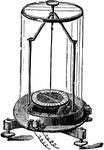
Astatic galvanometer
"The galvanometer is an instrument for determining the strength of an electric current by means of the…
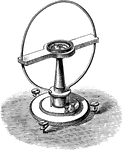
Tangent galvanometer
"The galvanometer is an instrument for determining the strength of an electric current by means of the…

Chemical balance
"The most accurate method of determining the specific gravity of a mineral is by the use of a chemical…

Holoptychius
"A fish known chiefly by scales, fossil remains of which are found in Old Red Sandstone." — Williams,…

Aneroid Barometer
"This is an instrument shaped something like a small clock, and the barometric pressure is read by means…
White Lily
This illustration shows a radical leaf of the White Lily, with its base thickened into a bulb-scale,…
Appalachian Mountains
This illustration shows the Appalachian Mountains, a region of numerous flexures on a grand scale, as…
